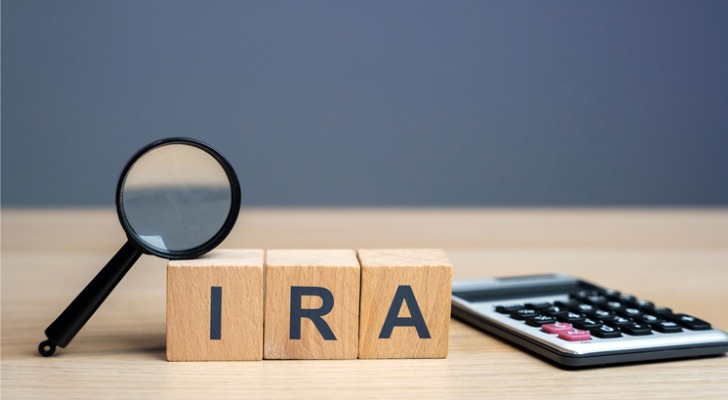Individual retirement accounts (IRAs) are a popular and common way for Americans to save for retirement. However, not everyone is aware of a crucial component of IRA regulations called the “aggregation rule.” Essentially, if you have multiple IRAs, this rule treats them as a single IRA for tax purposes. This can be especially important to understand when performing Roth conversions or planning for required minimum distributions.
A financial advisor can help you manage your retirement accounts and adhere to this important rule.
What Is the Aggregation Rule?
The IRA aggregation rule is an IRS guideline that requires you to treat all of your traditional IRAs as a single combined account when calculating certain tax obligations. Instead of looking at each IRA separately, the IRS considers their total value when determining how much of a distribution is taxable, how nondeductible contributions are handled and how rules like the pro-rata formula apply. This means that even if you have multiple IRAs at different institutions, you can’t isolate the tax effect of one account from the others.
The rule matters most when you make nondeductible contributions or plan conversions, such as a backdoor Roth IRA. Because the IRS views all traditional IRAs as one pool, any nontaxable portion must be calculated based on the ratio of your total basis to your total IRA balance, not just the balance of the account you’re withdrawing from.
For investors managing several accounts, understanding this rule is essential to avoid unexpected taxes and ensure your retirement strategy remains efficient. A financial advisor can help you apply the aggregation rule correctly and structure your IRA contributions and conversions with confidence.
How Aggregation Affects Roth Conversions

When it comes to a Roth conversion – transforming funds from a traditional IRA into a Roth IRA – the transaction typically has tax implications since the converted money is typically subject to income tax. The aggregation rule can significantly alter the tax impact of this conversion, especially when you’ve made non-deductible contributions to an IRA.
Suppose that you have two IRAs and make non-deductible (after-tax) contributions to one of them with the hope of converting that account into a Roth IRA. The aggregation rule precludes you from converting only the non-deductible contributions. Instead, the IRS considers all of your IRAs as a single unit when you perform a Roth conversion.
For example, imagine you have $40,000 in one IRA and another $10,000 in a separate account that was funded entirely with non-deductible contributions. However, you want to convert the second IRA into a Roth account. This is where the aggregation rule kicks in. The conversion must be done on a proportional or pro rata basis, meaning your tax liability is based on the total value of all of your IRAs, not just the assets you want to convert.
The $10,000 that’s being converted comprises 20% of your overall $50,000 IRA balance (remember, the IRS treats multiple accounts as one). That means only 20% of the conversion would come from your non-deductible IRA and the remaining 80% would come from the pre-tax IRA. As a result, you’d pay taxes on $8,000 of the $10,000 that’s being converted.
How Aggregation Affects RMDs
Required minimum distributions (RMDs) are the minimum amount you must withdraw from your retirement accounts each year, starting at age 73 (unless you turned 72 before December 31, 2022). The aggregation rule comes into play here as well.
If you have more than one IRA, you’ll calculate a separate RMD for each account. But when it comes time to make these mandated withdrawals, the IRS allows you to combine them and withdraw a lump sum from one account if you choose. Then again, if you prefer to make separate withdrawals from each account, you can do that as well.
Avoiding the Aggregation Rule

It’s essential to clarify that there is no exemption from the aggregation rule per se. However, you can employ strategies to efficiently manage your retirement accounts under the rule. One such strategy is to roll IRA funds into an employer-sponsored plan like a 401(k) (called a reverse rollover), which resides outside the rule’s scope.
Let’s return to the earlier example of the two IRAs worth a combined $50,000. Suppose you’re also enrolled in a workplace retirement plan like a 401(k). If your plan allows it, you could roll the traditional IRA with $40,000 into your 401(k), leaving you with just one IRA. You could then convert the remaining account, worth $10,000 in non-deductible contributions, into a Roth IRA and avoid aggregating altogether. The timing and execution of this strategy can be complex, so make sure to consult a financial advisor before proceeding.
Tax Planning Tips if You Have an IRA
Managing an IRA effectively goes beyond making contributions, smart tax planning can help you keep more of your retirement savings and avoid surprises at tax time. Because IRAs come with specific rules around withdrawals, deductions and conversions, understanding how these choices affect your taxable income is essential. With a thoughtful approach, you can use your IRA to maximize both tax efficiency and long-term growth.
- Track your nondeductible contributions carefully: If you make nondeductible contributions to a traditional IRA, be sure to file Form 8606 each year to document your basis. This helps you avoid paying taxes twice when you take withdrawals later. Keeping accurate records is crucial, especially because the IRS applies the aggregation rule across all your IRAs.
- Consider Roth conversions during low-income years: Converting traditional IRA funds to a Roth IRA can be tax-efficient when your income, and therefore your tax bracket, is temporarily lower. A well-timed conversion may reduce your long-term tax burden by letting your money grow tax-free. Just remember that the conversion amount is treated as taxable income in the year you convert.
- Plan ahead for required minimum distributions (RMDs): Once you reach the age when RMDs apply, you must withdraw a set amount each year or face steep penalties. Estimating your future RMDs can help you avoid large, unexpected withdrawals and manage your tax bill. Some investors reduce future RMDs by gradually drawing down or converting their IRAs before the required age.
Thoughtful tax planning can make your IRA far more effective as a retirement tool, reducing avoidable taxes and helping your savings grow more efficiently. Whether you’re managing nondeductible contributions, considering a Roth conversion or preparing for RMDs, staying proactive is key. If you want personalized guidance, a financial advisor can help you build a tax-smart strategy tailored to your long-term goals.
Bottom Line
The IRA aggregation rule can have a substantial impact on your retirement savings and tax planning. It’s essential to understand how it works and take steps to mitigate its effects if necessary. Whether you’re considering Roth conversions, RMDs or simply managing your IRA accounts, being well-informed about this rule will help you make more educated financial decisions.
Tips for Managing an IRA
- A financial advisor can help you select investments for your IRA and provide advice on moves like a Roth conversion. Finding a financial advisor doesn’t have to be hard. SmartAsset’s free tool matches you with vetted financial advisors who serve your area, and you can have a free introductory call with your advisor matches to decide which one you feel is right for you. If you’re ready to find an advisor who can help you achieve your financial goals, get started now.
- It’s important to be mindful of the annual IRA contribution limits. If you exceed these limits, you may be subject to a 6% excess contribution penalty. The IRS will hit you with this penalty every year until you remove the extra contributions, and any earnings the money generates, from your account.
Photo credit: ©iStock.com/sturti, ©iStock.com/designer491, ©iStock.com/Andrii Yalanskyi
